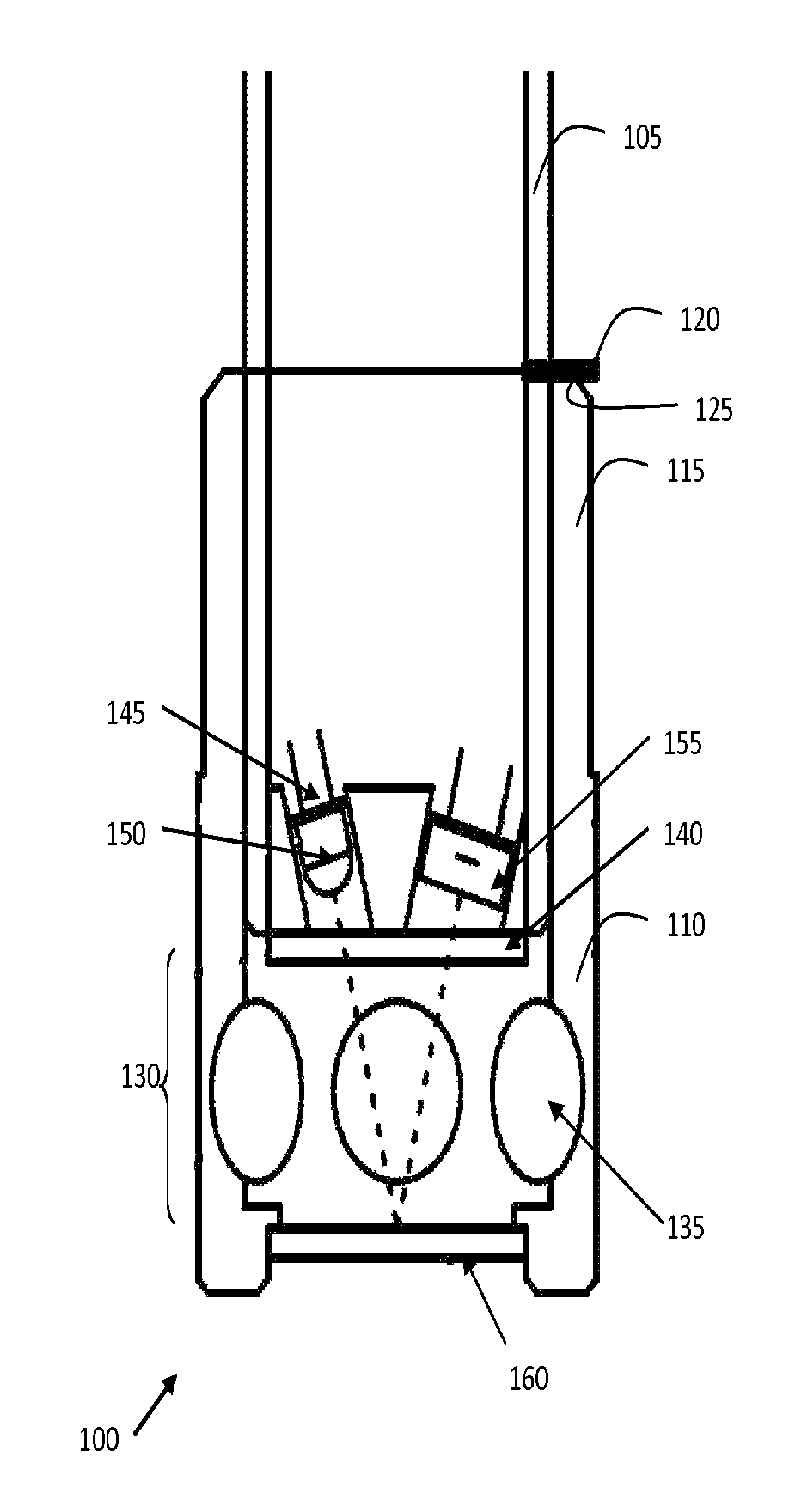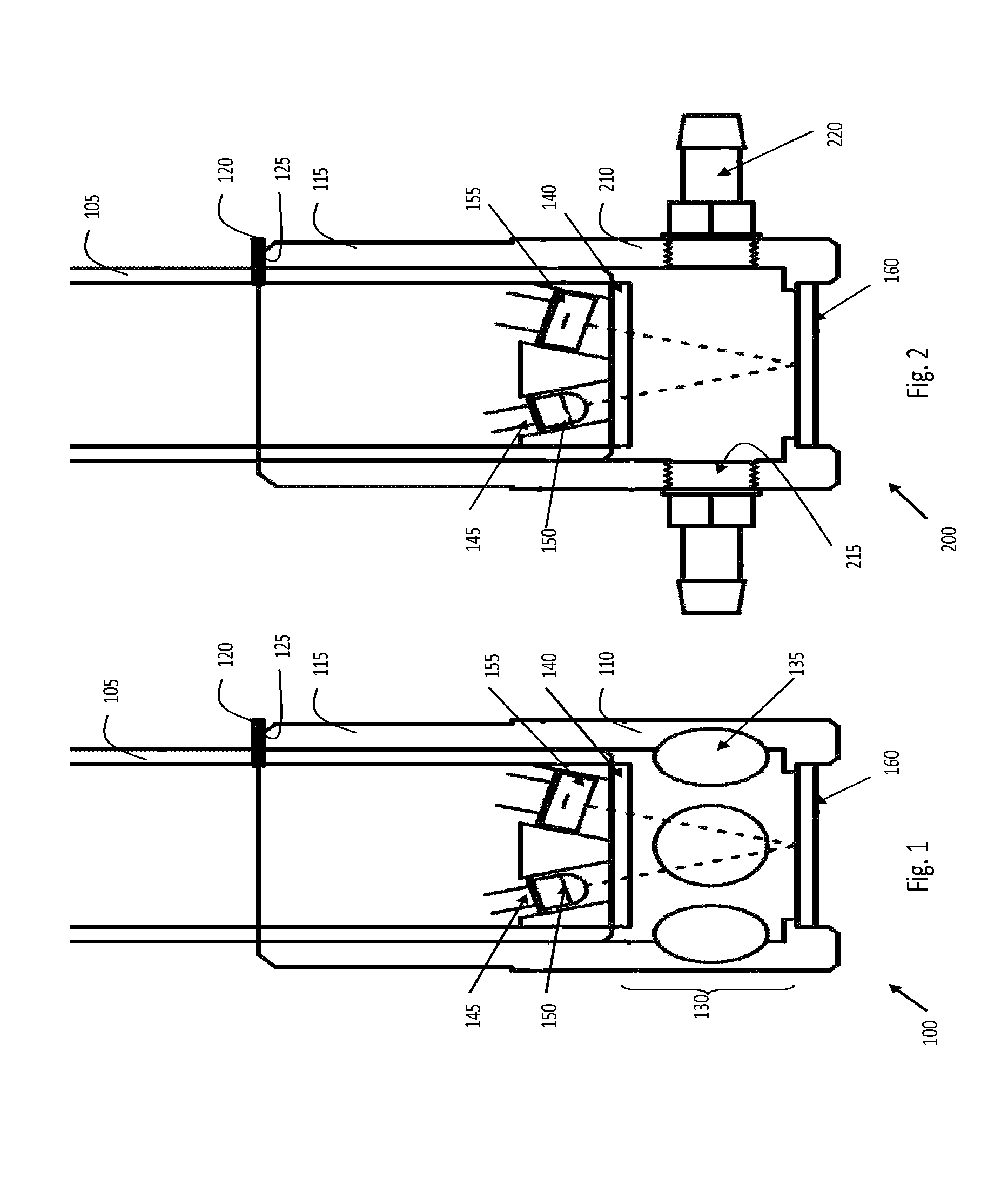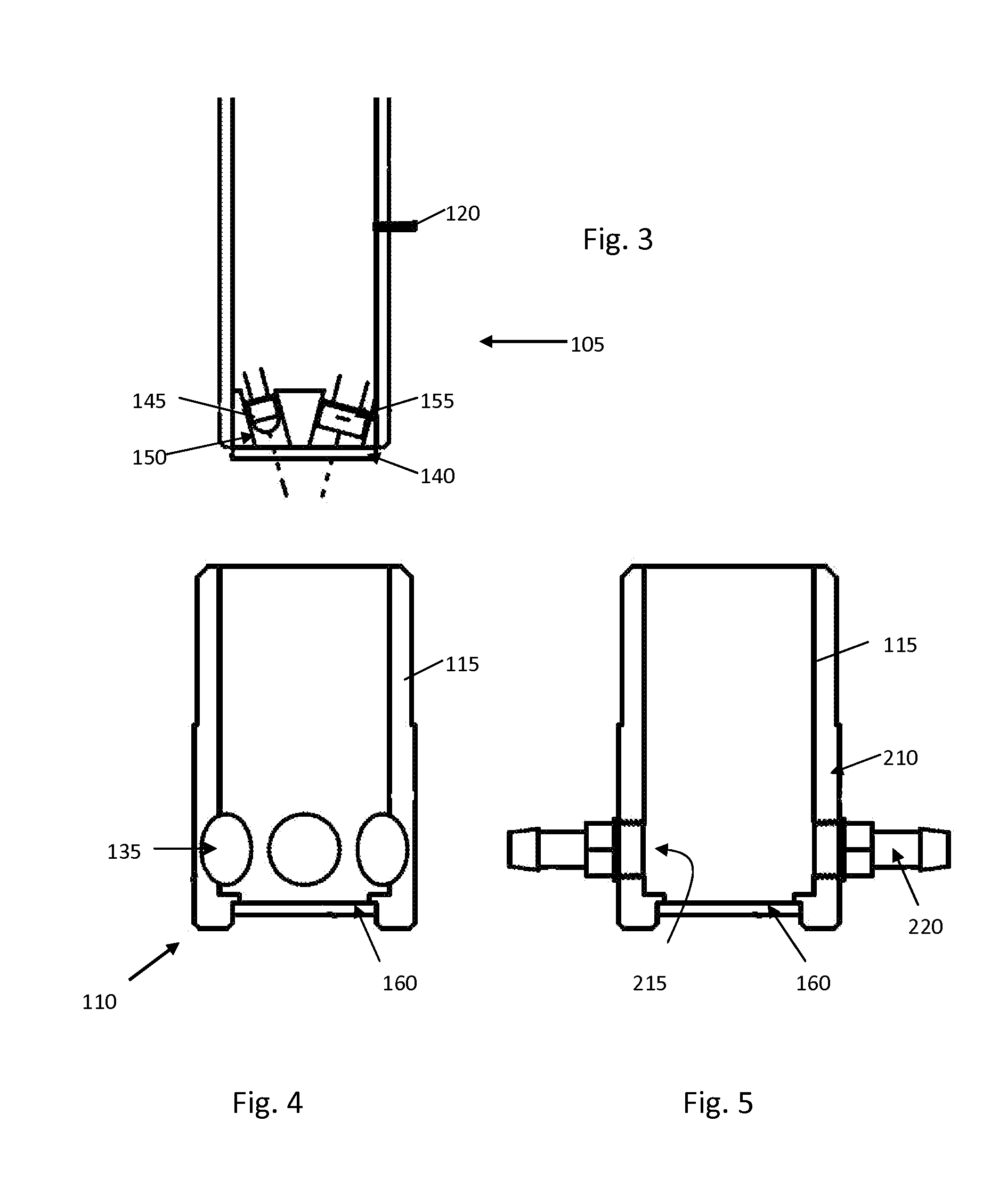Absorption probe for measuring dissolved organic carbon in an aqueous sample
a technology of dissolved organic carbon and absorption probe, which is applied in the field of absorption probes, can solve the problems of cumbersome instruments required for infrared absorption for the measurement of organic carbon in water, long sample preparation protocol, and high cost, and achieve the effect of facilitating the use of absorption probes
- Summary
- Abstract
- Description
- Claims
- Application Information
AI Technical Summary
Benefits of technology
Problems solved by technology
Method used
Image
Examples
first embodiment
[0044]FIGS. 1, 3, 4 and 6 illustrate a hand-held portable absorption probe 100 for measuring an amount of dissolved organic carbon in an aqueous sample.
[0045]The hand-held absorption probe 100 measures the transmission or absorbance of water at a wavelength of approximately 255 nm, which is an industry standard for detection of dissolved organic carbon (DOC) and “aromatic” dissolved carbon. Waters contaminated with dissolved organic carbon have a broad absorption spectrum which extends from below 250 nm to 400 nm. The absorption of light in these waters increases significantly as the wavelength is reduced from 400 to 250 nm. UV 254 is selected as an industry standard because traditionally a mercury discharge lamp is used to generate the UV light where mercury has a strong emission at 253.7 nm. The exact wavelength is not critical to the analysis, but preferably a wavelength close to 254-255 nm is chosen to maximise the sensitivity.
[0046]The absorption probe 100 comprises a housing m...
second embodiment
[0058]With reference to FIGS. 2, 3, 5 and 7, a hand-held absorption probe 200 is illustrated.
[0059]The absorption probe 200 in the second embodiment is suitable for an in-line or flow through application where the probe 200 is attached, for instance, to a faucet. With the exception of the second member 210, all remaining components of the flow through application absorption probe 200 are identical to the hand held probe 100 and will not be repeated here.
[0060]Formed within a lower portion of the wall of the second member are a pair of apertures 215. An engagement means 220 is affixed to each of the apertures 215, such means being operable to engage the output of a faucet. As with the first embodiment, the second end of the second member 210 forms a sheath 115 which slides over the outer surface of the first member 105 and enables releasable engagement, although it should be appreciated that the probe of the second embodiment 200 will be subject to much higher fluid flows and therefo...
PUM
| Property | Measurement | Unit |
|---|---|---|
| size | aaaaa | aaaaa |
| size | aaaaa | aaaaa |
| temperatures | aaaaa | aaaaa |
Abstract
Description
Claims
Application Information
 Login to View More
Login to View More - R&D
- Intellectual Property
- Life Sciences
- Materials
- Tech Scout
- Unparalleled Data Quality
- Higher Quality Content
- 60% Fewer Hallucinations
Browse by: Latest US Patents, China's latest patents, Technical Efficacy Thesaurus, Application Domain, Technology Topic, Popular Technical Reports.
© 2025 PatSnap. All rights reserved.Legal|Privacy policy|Modern Slavery Act Transparency Statement|Sitemap|About US| Contact US: help@patsnap.com



